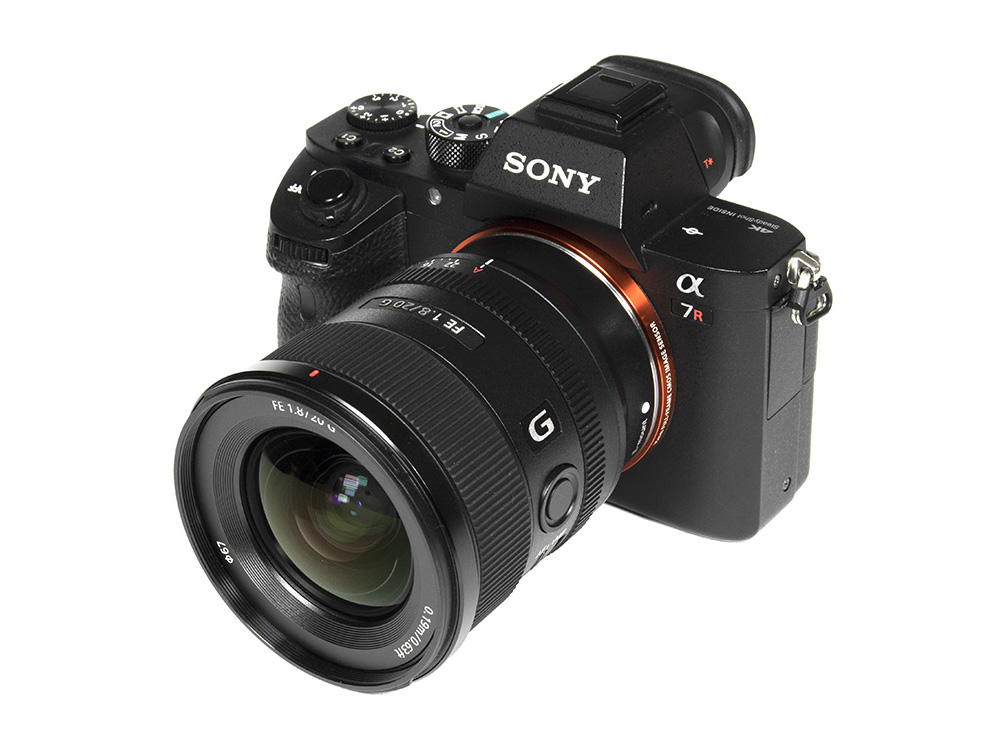Just two decades ago, 20mm lenses were rather exotic beings and about as extreme as it got in the ultra-wide angle segment. Today, it’s probably more appropriate to classify such lenses as “moderate” ultra-wide. However, this doesn’t mean that they aren’t desirable – on the contrary. You may argue that -say- a 14mm lens offers more thrill, but the wider you go, the more you emphasize the foreground whereas the background gets “pushed back”. In case you haven’t used such a lens – it’s not trivial to find many scenes that work really well with such a lens. This is much less of a challenge at 18/20mm. Such lenses still offer a fairly dramatic perspective while avoiding going over the top. 20mm prime lenses were a bit neglected by the manufacturers for many years, but we have seen a bit of a revival lately – namely the Nikon Z 20mm f/1.8 S, the Tamron 20mm f/2.8 Di III, and the Sony FE 20mm f/1.8G. In this review, we are going to discuss the latter.
As the name implies, the Sony FE 20mm f/1.8G is a member of Sony’s G-class series – or in other words: it’s targeting semi-professional users. The build quality is very high thanks to a combination of high-grade plastics based on a metal mount. The lens is also dust- and splash-resistant. The front element features a fluorine coating for repelling dust and water as well. The broad, rubberized focus ring operates smoothly. Interestingly, Sony decided to add a dedicated aperture ring. So far, we’ve only seen this in some Zeiss ZA and Sony GM lenses. You can also switch the aperture-ring to a “de-clicked” mode if you are into movies. A plastic, petal-shaped lens hood is included in the package.
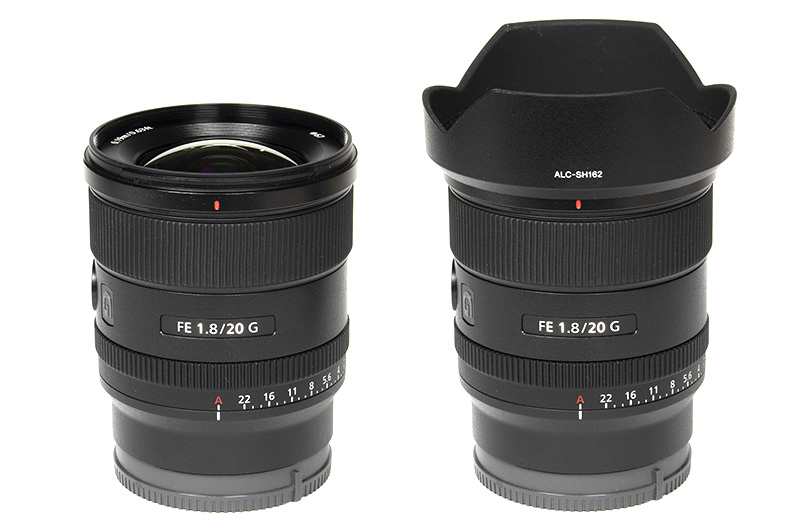
The Sony FE 20mm f/1.8G uses two XD (“Extreme Dynamic”) linear motors for very fast and silent focusing. A fast AF is usually not a killer argument in this segment – but then – why complain? There’s also a (customizable) focus stop button in case you need it. The focus group is guided on an internal rail system. Unless mounted to the camera, you can actually feel how the focus group moves on the rails when turning the lens upside down. Manual focusing works by-wire; thus, you are driving the focus motors when turning the focus ring. This works nicely and it’s very precise. It’s also worth noting that the lens can focus down to 0.18m, allowing a maximum object magnification of 1:4.5. While this isn’t in macro territory yet, it’s certainly unusual in this class.
| Specifications | |
|---|---|
| Optical construction | 14 elements in 12 groups inc. 2x aspherical, 3xED elements |
| Number of aperture blades | 9 (rounded) |
| min. focus distance | 0.18m (max. magnification 1:4.5) |
| Dimensions | φ 73.5×84.7mm |
| Weight | 373g |
| Filter size | φ 67mm |
| Hood | petal-shaped (bayonet mount, supplied) |
| Other features | dust & moisture resistant focus-stop button aperture-ring, clickless mode |
Distortions
The Sony FE 20mm f/1.8 G is surprisingly well-corrected for a mirrorless lens. Its native pincushion distortion is very mild at just ~0.6%. Image auto-correction can take care of “the rest” and the unavoidable loss in quality is marginal in this case.
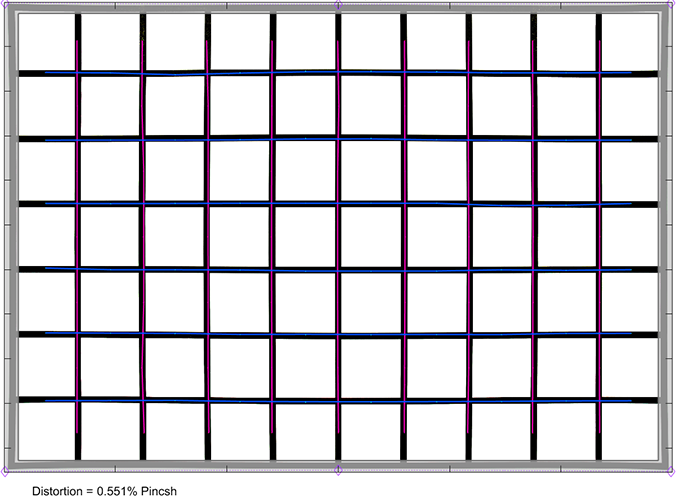
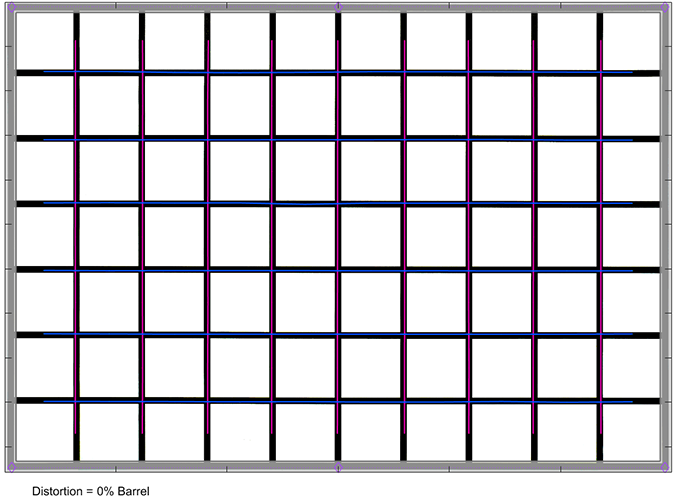
Vignetting
Many ultra-wide lenses struggle when it comes to vignetting. Some of this can be contributed to plain physics but it’s not just that. The Sony lens doesn’t have an ideal characteristic here. A native vignetting of almost 3EV (f-stops) is hardly surprising at f/1.8. However, if you stop down, the light falloff remains quite heavy even at f/5.6.
Image auto-correction “shaves off” more than 1.5EV, so it’s a much lesser issue in this case. Remember that this signal boost comes at the cost of increased corner noise, though.
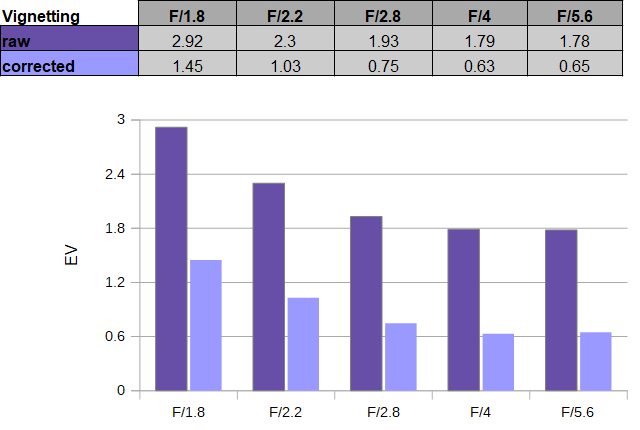
MTF (resolution) at 42 megapixels
The resolution capabilities of the Sony FE 20mm f/1.8 G are much more impressive again. The broader center quality can be considered to be just about PERFECT across the aperture range. You may expect that the outer image region is miserable at f/1.8. Unsurprisingly, the borders/corner are weaker indeed, but the quality is still in a range that we classify as “good”. Stopping down improves the quality and the results are best around f/4 – including very good borders/corners. Diffraction is a limiting factor beyond f/8.
The centering quality of the tested sample was very good. Field curvature is not an issue and the astigmatism is very low.
Please note that the MTF results are not directly comparable across the different systems!
Below is a simplified summary of the formal findings. The chart shows line widths per picture height (LW/PH) which can be taken as a measure of sharpness. If you would like to know more about the MTF50 figures, you may check out the corresponding Imatest Explanations.

Chromatic Aberrations (CAs)
Image auto-correction will take care of lateral CAs (color shadows at the image borders). It’s a lossless procedure, so it doesn’t have any negative impact.
However, the native CA characteristic is excellent anyway. An average CA pixel width of 0.3-0.4px at the image borders is barely visible in the first place.
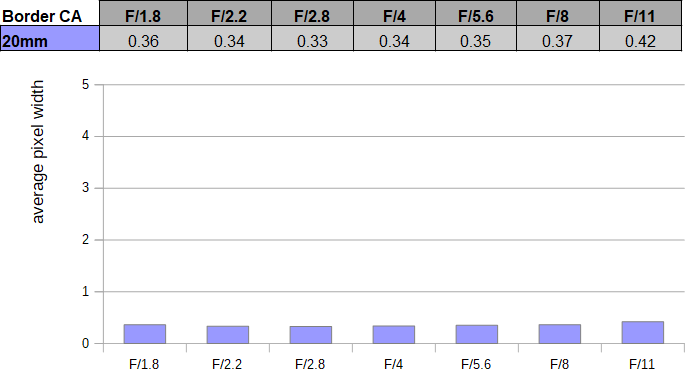
Bokeh
Usually, we don’t really discuss the quality of the bokeh of an ultra-wide lens in detail. However, the Sony lens is much faster than most in its class, so let’s take a look.
Out-of-focus highlights are also very nicely rendered, with a smooth inner zone and marginal outlining. This is magnitudes better than on most wide-angle lenses. The more edgy aperture shape is just visible at f/2.8, but the deterioration isn’t overly obvious even at f/4.
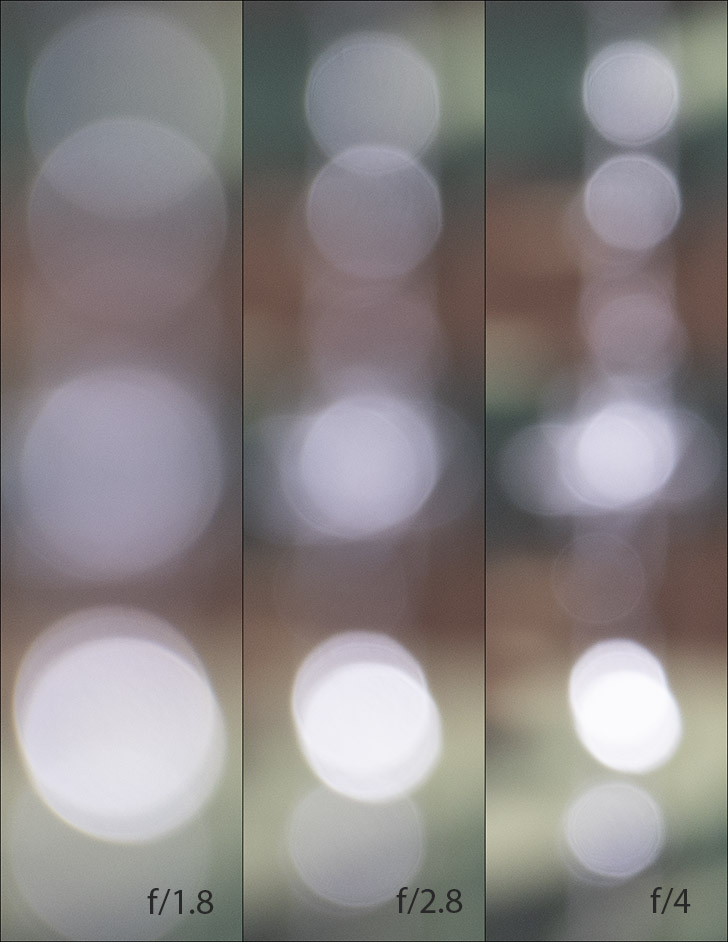
Below is a sample crop of a bokeh scene where most ultra-wide lenses would struggle due to harsh contrasts. Surprisingly, the Sony lens manages this scene quite nicely, with smooth transitions to both the image background and foreground.

Perhaps even more baffling is the fact that the Sony lens can maintain the circular highlight shape at the image borders/corners. We’d like to see such a characteristic in a tele lens … but we haven’t so far …
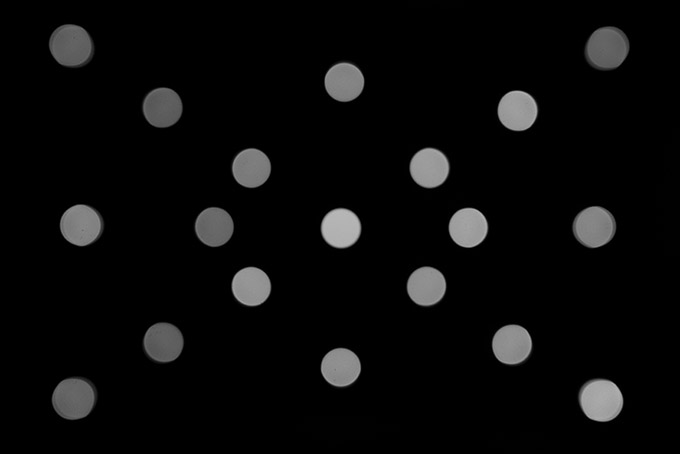
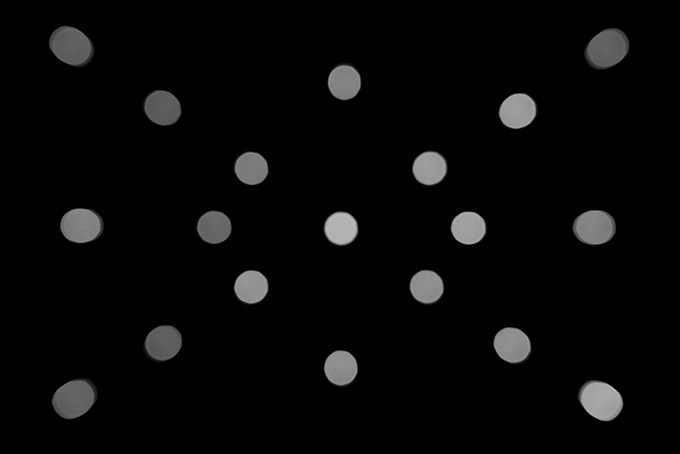
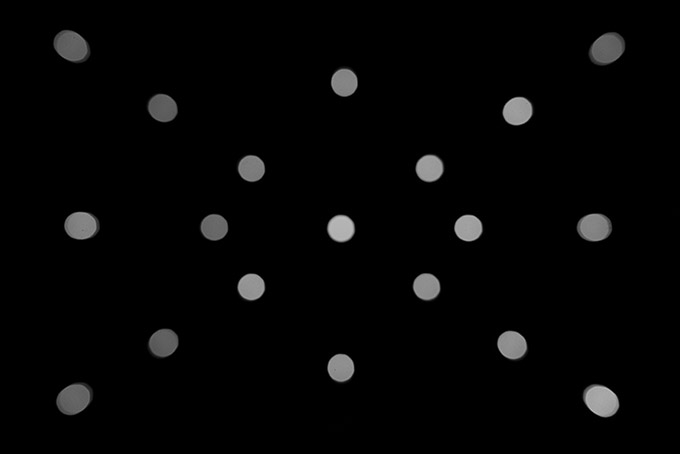
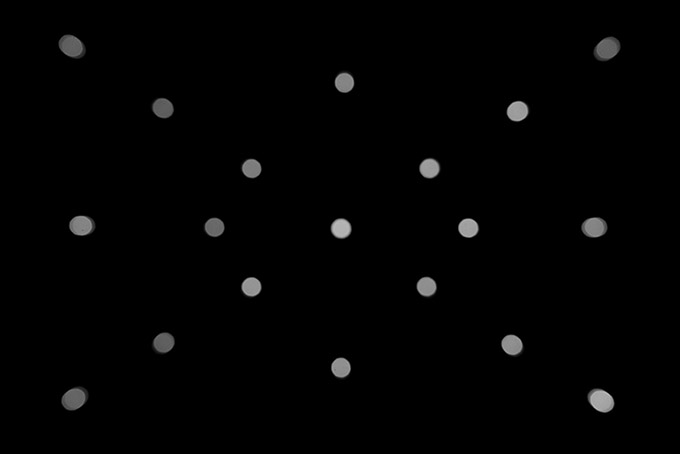
Competition
There are a couple of lenses competing with the Sony FE 20mm f/1.8 G (shown to the left below) although none of them is quite as fast. The most obvious candidate is the Tamron 20mm f/2.8 Di III OSD M1:2 (to the right) – a much more affordable option. We haven’t tested this one yet but based on the info that’s available out there, it shouldn’t be able to touch the Sony lens in terms of performance and build quality. However, besides the lower price tag, it offers a little kick for close focus scenes with a max. object magnification of 1:2. The Samyang AF 18mm f/2.8 FE (center) offers a somewhat wider view which is, undeniably, interesting. It’s weak at large apertures but pretty good from f/4 onward. It’s also much smaller and, of course, much cheaper – albeit cheap is also the word that comes into mind regarding its build quality. A more serious “threat” is the Zeiss Batis 18mm f/2.8 (not shown) and it’s of course, a more expensive option. The Sony FE 20mm f/1.8G is better at f/2.8 but beyond it’s a fairly even match. A more exotic choice would be the Zeiss Loxia 21mm f/2.8.

Sample Images
In the grand scheme of things, the Sony G lenses seem to be a bit underappreciated, whereas the GM lenses collect all the glory. However, we think that the G series could actually be THE reason for serious amateurs to prefer the Sony system over Canon/Nikon/L-mount. These lenses strike the perfect balance between costs and performance. The Sony FE 12-24mm f/4G, 90mm f/2.8G, FE 24-105mm f/4G, and FE 200-600mm f/5.6-6.3G are all excellent choices ... and so is the Sony FE 20mm f/1.8G.
The Sony lens offers breathtaking sharpness in the broader center zone at all mainstream aperture settings. The corner performance isn't quite as high, but it's very usable at f/1.8 already and very good at medium aperture settings - all with minimal field curvature and low astigmatism. As such, the lens is also feasible for astrophotography. The native image distortion is low and nicely corrected in auto-mode. The same goes for lateral CAs. The biggest weakness of the lens is vignetting. It's rather extreme at f/1.8 in raw files, and not overly impressive even at f/5.6. Image auto-correction comes to the rescue here as well, so usually, you will just spot some light falloff at f/1.8. An almost baffling aspect is the quality of the bokeh. Wide-angle lenses are usually rather mediocre in this respect - at best - whereas the FE 20mm f/1.8G is actually impressive with smooth highlight discs that can maintain a circular shape even in the image corners. And the general blur characteristic is good, too.
The build quality is excellent thanks to high-grade materials and a tight assembly. The lens doesn't extend during focusing and is sealed against dust and moisture. Sony also added some mechanical goodies such as a dedicated aperture ring including a clickless mode and a focus stop button. You may argue that it would have been nice if they also added optical image stabilization, but we think it's good that they avoided this temptation. Especially ultra-wide lenses require precise centering, and an image stabilization group would have made things more complex here - besides the extra costs. Another positive aspect is the compact size and low weight.
The Sony lens isn't cheap to boot, but then it's also faster than your average 20mm lens. As a rule of thumb, an extra stop doubles the price tag. Keeping this in mind, the price of around 900USD/EUR is still reasonable. And we conclude our verdict with ... highly recommended!
The Good
- Pretty sharp for such a lens
- Very compact and lightweight
- Low distortion even in RAW images
The Bad
- Fairly high vignetting
-
Optical Quality
-
Build Quality
-
Price / Performance


